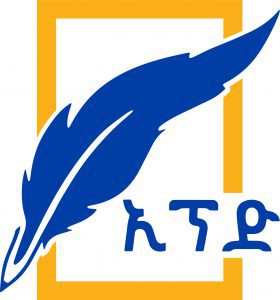
The theoretical aspects of translating books from one language to another are very interesting. Writing a book is obvious; but what are the intricacies of translation? Many people often think that translating a book is easier than writing an original one. However, this statement is not always true.
This rather simplistic assumption is based on the idea that writing a book is like creating something out of nothing, while translating it is merely changing the language of a book that has already been written. Both writing original works and translating have their own intricacies.
“Translating books involves converting a written work from one language to another, preserving its meaning, style, and cultural nuances. It is a complex process requiring expertise in both source and target languages as well as an understanding of the literary context.”
Nevertheless, translation goes beyond simply converting a book from one language to another. It also requires a deep knowledge of both the source and target languages. The major skills involved include native-level fluency in both languages, strong writing abilities in the target language, and a deep cultural understanding of both. This is particularly true for professional translation work.
However, many translators are not professionals in the strict sense; the majority are amateur translators engaged in this work either for financial gain or simply because they love translating books.
From my observations, many translators assume that having a command of the target language is sufficient for translating a book. They often believe it is unnecessary to have a good grasp of the source language.
For example, if I am translating a book from English to Amharic, they might think it’s enough to know Amharic well, even if my command of English is not very strong. This assumption is not only erroneous but also opens the door for amateur translators who think that knowledge of one language can make them dependable translators. In reality, one needs solid skills in both English and Amharic to be a good translator.
Translating books can bring many trials and tribulations, as well as pleasures and pains. Many years ago, I began translating a little-known nonfiction book on the art and science of raising children, entitled “What to Expect the First Year.” This book is 630 pages long, and I condensed it to about 450 pages in its Amharic version. The book was an instant bestseller in the United States when it was released in 1989. However, seven years later, the Amharic version still gathers dust on my shelf, as my hopes of publishing it have now vanished.
I started the translation work with the assumption that I had an adequate grasp of both languages, as many fellow translators believed at that time. This self-assertion was not based on solid experience or knowledge of translation theories. Reflecting on my experience translating that particular book, it would be more relevant for me to discuss the challenges I faced after completing the translation.
Some publishers I approached were apparently intimidated by its length and the high printing costs it could incur. Two years ago, I took the same book to a well-known bookseller and publisher in Addis Ababa who promised to publish it and said he would call one of his printers to evaluate the printing costs. On the appointed day, I called him with great expectations. Unfortunately, the would-be publisher failed to answer my calls. After several attempts to connect with him, I was met with silence.
My heart sank, and I abandoned my inquiries. I returned home, put the translated book back on my shelf, took a deep breath, and reflected on the time and effort I spent translating the 630 pages of the English version. I felt as if disaster had struck me, and my heart sinks every time I look at the unpublished book gathering dust.
Looking back, I realize I made several mistakes. The first was my failure to seriously assess whether my translation was truly professional. It was not. At that time, I had no acquaintance with the theories of book translation I briefly outlined earlier. This should not, however, serve as an excuse for the potential sloppiness of my work.
The second mistake was not taking the time to check and recheck the translation to improve its quality. I should have reviewed the authenticity of my translation at least one more time before rushing to find a publisher. The length of the book was an intimidating factor that discouraged thorough revision. My third shortcoming was not consulting an editor or a neutral reader.
Writing can be a pleasure because it is an act of creativity, akin to playing an exciting game with oneself. It involves imagination and is done with love and little expectation of a good return. Translating a large work, however, can be torturous and may lead to significant heartache if it remains unpublished. Those who have tried it understand this feeling. Months of labor, energy, time, and sleepless nights… it can feel like a complete loss of effort. I chose not to talk about it, at least to spare myself the heartache and disappointment. That was the moment I decided not to translate again, and I have held to that promise.
Sometimes, I reminisce about the 1990s when translated works enjoyed high demand in Ethiopia, and many enduring classics of Western literature were translated, published, and sold without much issue. It was a time when even our major writers turned to translation. The late Mesfin Habtemariam, an excellent writer and translator, introduced us to Ernest Hemingway’s classic, “The Old Man and the Sea,” in Amharic. He also translated short stories from English into Amharic, introducing local readers to authors like O. Henry and Mark Twain. That was indeed the golden age of translation from English into Amharic.
Short story collections were in high demand, and readers enjoyed them. During this period, many local writers produced remarkable short stories and found success. The short story emerged as a new genre in Amharic literature, becoming popular for a brief time before it saw a decline as tastes changed.
The trials and tragedies of writing or translating books are many. The greatest reward comes not in monetary form but in the love for the work and the pleasure of seeing your work published and sold in limited editions. Forget the royalties; they are shamefully insignificant while publishers and distributors enjoy the bulk of the profits.
This is one reason we have not produced a single professional writer in Ethiopia—someone who lives exclusively on the proceeds of their books. This is another tragedy of writing in this country. As the late writer, translator, and editor Amare Mammo once said, Ethiopian writers must be among the poorest, even by African standards.
In closing, I believe that knowledge can free translators from the mistakes I made by neglecting certain standards or requirements of translation. I wish I had understood some translation theories before starting my work. Knowledge could have spared me some of the pains I experienced during my translation journey.
As I have come to realize, book translation is a serious, necessary, and respectable endeavor. This leads me to believe that literature departments in our universities should pay more attention to the theories of book translation. Many of the world’s classic works first reached us through good translations. Offering courses in translation theory could help spare future translators from the pains some of us endured in the past.
BY MULUGETA GUDETA
THE ETHIOPIAN HERALD WEDNESDAY 14 MAY 2025





